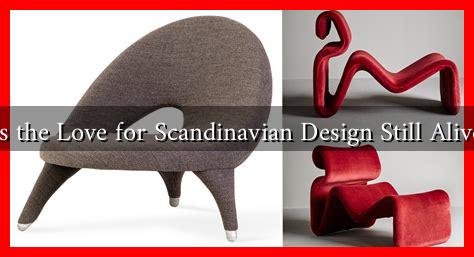-
Table of Contents
Is the Love for Scandinavian Design Still Alive?
Scandinavian design, characterized by its minimalism, functionality, and connection to nature, has captivated audiences worldwide for decades. Originating in the Nordic countries—Denmark, Sweden, Norway, Finland, and Iceland—this design philosophy emphasizes simplicity and practicality while maintaining an aesthetic appeal. But as trends evolve and new styles emerge, one might wonder: is the love for Scandinavian design still alive? In this article, we will explore the current state of Scandinavian design, its enduring appeal, and how it continues to influence contemporary aesthetics.
The Enduring Appeal of Scandinavian Design
Scandinavian design has a unique charm that resonates with many. Its principles are rooted in the following key elements:
- Minimalism: Clean lines and uncluttered spaces are hallmarks of Scandinavian design, promoting a sense of calm and order.
- Functionality: Every piece of furniture or decor serves a purpose, ensuring that beauty does not come at the expense of practicality.
- Natural Materials: Wood, wool, and leather are commonly used, reflecting a deep connection to nature and sustainability.
- Light and Space: The use of light colors and open spaces creates an inviting atmosphere, essential in the often dark Nordic winters.
These elements contribute to a design philosophy that is not only visually appealing but also promotes a lifestyle centered around comfort and well-being. According to a survey by the Danish Design Center, 78% of respondents believe that good design improves their quality of life, highlighting the emotional connection people have with Scandinavian aesthetics.
Current Trends in Scandinavian Design
While Scandinavian design has its roots in the mid-20th century, it has evolved to adapt to contemporary tastes. Here are some current trends that showcase its ongoing relevance:
- Eco-Friendly Practices: With a growing emphasis on sustainability, many Scandinavian designers are focusing on eco-friendly materials and production methods. Brands like Muuto and Finnish Design Shop are leading the charge in creating sustainable products.
- Bold Colors and Patterns: While traditional Scandinavian design often favored neutral palettes, modern interpretations are embracing vibrant colors and playful patterns, as seen in the work of designers like Kay Bojesen.
- Multifunctional Spaces: As urban living spaces become smaller, Scandinavian design continues to shine with its focus on multifunctional furniture that maximizes space without sacrificing style.
Case Studies: Brands Keeping the Flame Alive
Several brands and designers are at the forefront of keeping Scandinavian design alive and thriving:
- IKEA: The Swedish furniture giant remains a household name, known for its affordable, stylish, and functional designs. IKEA’s commitment to sustainability, with initiatives like the “People & Planet Positive” strategy, ensures its relevance in today’s market.
- HAY: Founded in 2002, this Danish design company has gained international acclaim for its modern take on classic Scandinavian design, blending functionality with a contemporary twist.
- Fjällräven: Known for its outdoor gear, this Swedish brand embodies the Scandinavian ethos of simplicity and durability, appealing to a generation that values both style and sustainability.
The Global Influence of Scandinavian Design
Scandinavian design has transcended its geographical origins, influencing global design trends. From architecture to fashion, the principles of minimalism and functionality are evident worldwide. For instance, the rise of “Scandi-chic” in interior design has led to a surge in popularity for items like hygge-inspired decor and minimalist furniture.
Moreover, the concept of “lagom,” which translates to “just the right amount,” has gained traction beyond Scandinavia, promoting a balanced lifestyle that resonates with many. This cultural export underscores the lasting impact of Scandinavian design on global aesthetics.
Conclusion: A Timeless Love Affair
In conclusion, the love for Scandinavian design is not only alive but thriving. Its principles of minimalism, functionality, and sustainability continue to resonate with consumers seeking beauty and practicality in their lives. As trends evolve, Scandinavian design adapts while maintaining its core values, ensuring its relevance in a rapidly changing world. With brands and designers pushing the boundaries of this beloved aesthetic, it is clear that Scandinavian design will remain a significant influence in the realms of architecture, fashion, and interior design for years to come.

